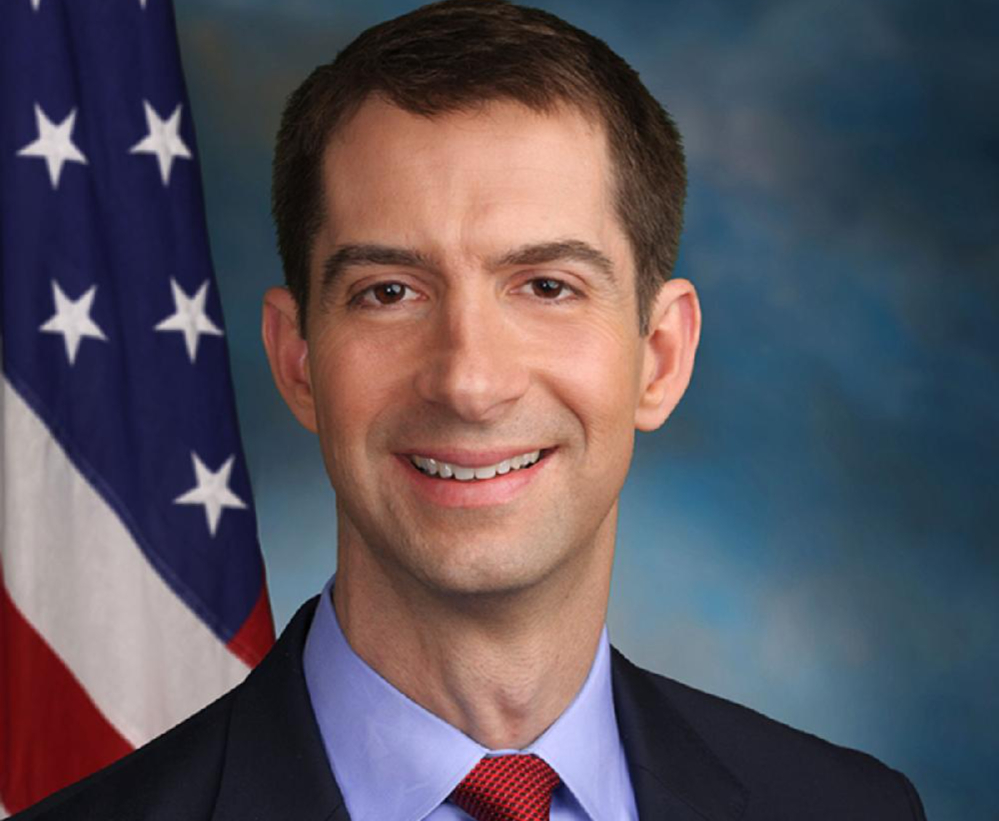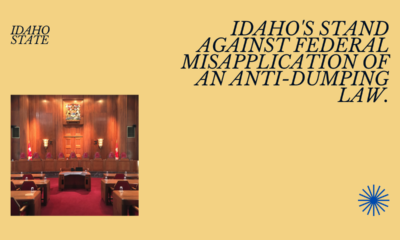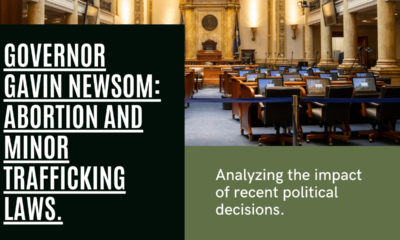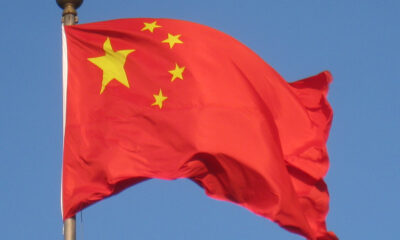Constitution
A New ‘Test of the News’
Recent controversies surrounding Sen. Tom Cotton (R-Ark.) have created a new “test of the news” for accuracy and impartiality.

It is admitted that a sound public opinion cannot exist without access to the news. There is widespread and growing doubt whether there exists such an access to the news about contentious affairs.
This was written more than a hundred years ago by two young journalists, Walter Lippmann and Charles Merz, in a 1920 critique of New York Times coverage of the Bolshevik Revolution. “A Test of the News,” as their analysis was called, showed that in a three-year period the Times reported more than ninety times that the Bolshevik government was about to fall, an extraordinary case of what is today called confirmation bias. “The news about Russia is a case of seeing not what was, but what men wished to see.”
The editors of the New Republic thought this analysis was so important that they turned the entire issue of the magazine over to the Lippmann-Merz report.
The article came to mind when I read James Bennet’s “When the New York Times Lost Its Way,” which itself took up a good part of the Economist’s 1843 Magazine. His article, too, is of signal importance to anyone who cares about the healthy formulation of public opinion.
Some context is necessary to evaluate the article. Bennet was once a rising star at The New York Times. He began as a young reporter covering the automotive industry and the Middle East; after a stint as editor of the Atlantic Monthly, he returned to head the Times’ editorial page. Then in 2020, almost exactly one hundred years after the Lippmann-Merz report appeared, he was asked to resign for publishing an op-ed by Sen. Tom Cotton. Cotton’s article was written in response to country-wide protests, some violent, that followed the murder of George Floyd. Cotton argued for calling out the United States military to make “an overwhelming show of force” to maintain order.
For many, Cotton was calling for a police state solution that was out of step with the threat. One rationale for publishing the op-ed was that Cotton had the ear of President Donald Trump. As such, his view mattered. But in the view of many in the Times’ newsroom, the opinion page had legitimized a point of view that was unacceptable. The Times union made a formal complaint. Readers squawked. Although Times publisher A.G. Sulzberger had often stated the editorial page should “invite intelligent discussion from all shades of opinion,” the pushback was too much. He asked Bennet to resign.
Bennet’s article is much more than a self-justification for publishing the piece. It is a thoughtful, judicious study in how journalism has slipped loose from its old moorings, becoming more partisan and much less dedicated to the idea of giving people all the facts so they can decide for themselves.
Bennet belongs to a school of journalism that once reigned at the Times. When Adolph Ochs bought the ailing Times in 1896, he wanted to set it apart from the sensational press. He took this view so far that he thought book reviews should be handled like news stories – fairly and dispassionately. The reviewer should report what a book’s author wrote, rather than judge it.
In its effort to avoid being incendiary, the Times could be too respectful of government leaders. This, paradoxically, helps explain its overheated reports from Russia. They were fueled in part by the Wilson administration, which had made a big bet on the Reds failing, and by anti-Red “White Russians” who were also sources for the Times reporting.
The plus side of the Times’ approach has been that when it did challenge the government version of the truth, it had enormous credibility.
Today’s Times, as Bennet argues, is less restrained in its judgments. It crossed a Rubicon of sorts – which Bennet does not mention – when it called Trump a liar for claiming that President Barack Obama was not an American citizen. The problem here is that in order to call someone a liar, a reporter must have evidence that the individual in question knows the truth, instead of simply being ignorant. It is difficult to know for sure what is in someone’s head. Even if one is willfully misinformed, he is not necessarily a liar. It was enough to report that Trump was wrong and let the public come to its own conclusion as to his state of mind.
Behind this decision to cry liar, liar, pants on fire was the belief that the news pages should privilege certain points of view. In Bennet’s words, “The Times’s problem has metastasized from liberal bias to illiberal bias, from an inclination to favour one side of the national debate to an impulse to shut debate down altogether.”
The backstory to how this has happened begins with the Internet, which undercut newspapers’ advertising. It became more profitable to pander to a partisan base. The Times readership soared in what was called the Trump bump.
In this complex process of change, many new tech-savvy reporters came to the Times with little experience in objective journalism and its standard of providing facts without reference to which side they might favor. Traditionally the Times, as was the case with many papers, expected young reporters to spend a good deal of time learning the business and imbibing its standards. Now they are going straight into jobs as senior reporters and editors.
Culture, lifestyle, and business pages were among the first to show bias, but the tendency spread beyond those sections. The problem has not been the alteration of facts, but the omission of views. Voices of those who support Trump or Cotton or people like them are not welcome, as they are seen as polluting thought. Readers are treated like children who need to be kept away from X-rated movies.
Reporters who have come of age with the self-indulgent ethos of social media consider it their right to act as speech police with public tweets. In their determination to cleanse the Times, staffers angry over the Cotton op-ed sought to identify the people directly responsible for editing the piece. Attitudes like this have made the Times a hostile place for reporters who believe news should not be filtered through personal prejudice.
There is also the prejudice of the Times readers to contend with. That readership is self-described as 95% Democrat or independent, Bennet tells us. Rather than being open to other points of view, many subscribers scold the newspaper for telling them things they do not want to hear.
“The reality,” Bennet writes, “is that the Times is becoming the publication through which America’s progressive elite talks to itself about an America that does not really exist.”
Many conservatives may be gratified to read Bennet’s article as confirmation that the Times is the enemy. But this is as wrongheaded as the Times staffers’ bias.
First, Bennet’s argument applies to news generally. Partisanship of one kind or another has crept into news almost everywhere. Fox News is a good example. Afraid that they would lose their pro-Trump audience, some Fox hosts and executives were willing to support Trump’s claims that the election was stolen even though they believed nothing of the sort happened. The damning evidence for this came out in a defamation case brought by Dominion Voting Systems, which Fox settled for $787.5 million.
Those who hate the Times should ask if they love their favorite media too much. They should ask, too, if they are unwilling to listen to other points of view.
Second, the Times was the ideal target for Bennet’s critique because, withal, the paper remains one of our premier news outlets. Virtually every day the Times breaks significant, well-reported stories that provide information the public needs. This is especially important considering the many fine papers that have folded due to changes in the news business.
It was the Times’ excellence that led Lippmann and Merz to choose it for their critique. The Times, a news leader, can set a standard for other papers. In Bennet’s words, the Times is positioned, “by virtue of its principles, its history, its people and its hold on the attention of influential Americans, to lead the resistance to the corruption of political and intellectual life, to overcome the encroaching dogmatism and intolerance.”
Lippmann and Merz’s article “led a nationwide improvement in international reporting,” according to the trade journal Editor & Publisher. Over time, the pair reached the pinnacles of journalism. The Times hired Merz as editor of its editorial page, the job Bennet eventually held. In that position Merz courageously fought the intolerance of McCarthyism.
Lippmann became the most respected newspaper columnist in the country. In this capacity he continued to worry about creating sound public opinion. Freedom of speech, he wrote in 1939, does not exist so anyone can set up a soapbox and hire a hall to deliver their opinions “to those who are willing to listen. On the contrary, freedom of speech is established to achieve its essential purpose only when different opinions are expounded in the same hall to the same audience.”
Perhaps Bennet’s article will push us – press and public alike – to think that way.
This article was originally published by RealClearPolitics and made available via RealClearWire.
John Maxwell Hamilton, a longtime journalist, author and public servant, is the Hopkins P. Breazeale Professor of Journalism at the LSU Manship School of Mass Communication and a global scholar at the Woodrow Wilson International Center for Scholars, Washington, D.C. His most recent book is Manipulating the Masses: Woodrow Wilson and the Birth of American Propaganda.
-

 Education4 days ago
Education4 days ago‘Grading for Equity’: Promoting Students by Banning Grades of Zero and Leaving No Class Cut-Ups Behind
-

 Family3 days ago
Family3 days agoIdaho defends against abortion mandate
-

 Civilization4 days ago
Civilization4 days agoNewsom plays silly abortion politics
-

 Constitution2 days ago
Constitution2 days agoPresidential immunity question goes to SCOTUS
-

 Education22 hours ago
Education22 hours agoCHAPTER 11: Critical Race Theory: A Species of the Ideological Thought Genus Marxism
Space Is No Longer the Final Frontier—Reality Is [forthcoming release May 2024] -

 Civilization5 days ago
Civilization5 days agoWaste of the Day: China Still Owes Over $1 Trillion to American Bondholders
-

 Civilization5 days ago
Civilization5 days agoCurrent Conflicts Demonstrate Need for More and Better Tanks In Eastern Europe
-

 Civilization3 days ago
Civilization3 days agoMarine Corps Force Design: In Defense of Chowder II












